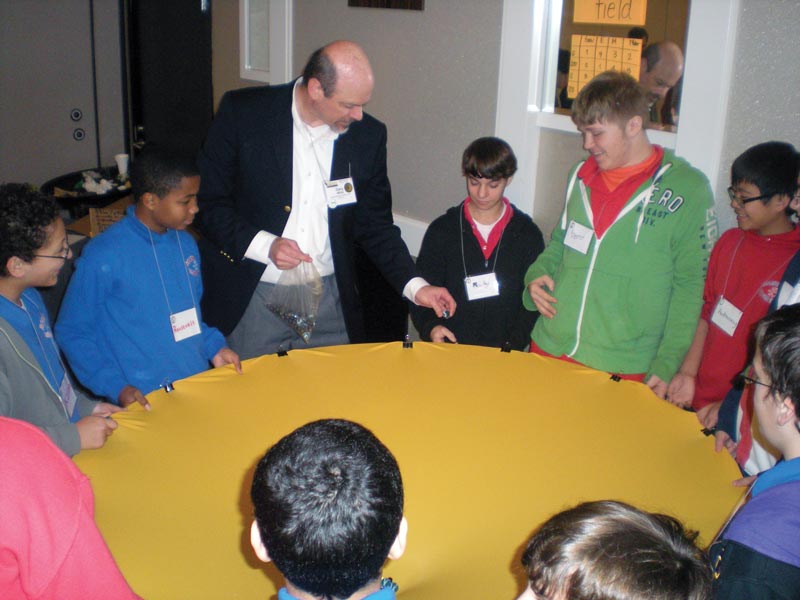Science Outreach... and Inreach
Spring
2014
Special Feature
Science Outreach... and Inreach
Gary White, Former Director of SPS and Sigma Pi Sigma

I love those moments—and they hang in my memory like crystals from a skylight—when kids put on spectroscopic glasses for the first time and see all the rainbows everywhere. The oohs and aahs, the exclamations and fascination, the spontaneous curiosity, and, dare I say it, the science that often erupts from even the most jaded participant are positively inspirational.
Getting to bring cool science to those who wouldn’t otherwise get to see it in their everyday lives is one of the privileges of being a physicist, as famed nuclear theorist Victor Weisskopf might say. Those instances when a student launches her first marble across a stretched spandex surface and when he successfully traverses the oobleck without sinking—they are not just fun, but deeply satisfying life experiences to engage in, and to observe. In fact, it’s why this issue of The SPS Observer is devoted to science outreach.
Here’s a kernel of truth I have distilled from the dozens of outreach events I have developed with hundreds of fellow scientists: though teaching the masses that great science is worthwhile, perhaps the most important reason why your SPS chapter should do outreach is the impact it will have on those inside your chapter. The best way to get your chapter members revved up is to get them to lead an exciting science outreach lesson.
To put it another way, science outreach is the best “inreach.” I’m not able to recall which SPS chapters first introduced me to this idea, but I do remember that they had separate leadership positions for the Science Outreach Officer, who took the lead in showcasing science outside the chapter, and the Science Inreach Officer, who arranged for fun science to be brought to the chapter membership itself. This arrangement is a great way to make sure that students look after their own scientific health, as well as provide useful service to the external community. I wish I had thought of it myself!
As a former director of SPS, I have seen and been part of everything from intimate classroom efforts in which a dozen students perform experiments with weighted dice or objects rolled down ramps, to a large-scale laser haunted house at the USA Science and Engineering Festival involving dozens of presenters and thousands of participants. The impact on the students leading or participating in these projects—the additional knowledge they glean in preparing, the confidence in communication that they begin to master, the camaraderie that develops among a group of like-minded presenters—is tremendous. Many of the scientists I know have had their identity as a scientist locked in by these kinds of experiences. And while some may think that outreach is a distraction from the science, I have seen it be the catalyst that led to more-engaged science careers.
One last bit of advice about science outreach: consider using activities in which the audience gets to do the science instead of watching you do science. I’m not saying that you should abandon your favorite showy bit of science outreach—watching a 55-gallon drum implode or hearing a LN2-laced two-liter bottle explode are great ways to get people’s attention. But add some liquid nitrogen ice cream stirred by the participants to the mix, or some hands-on pressure lessons with suction cups. These experiences allow participants to own the science for themselves. //
